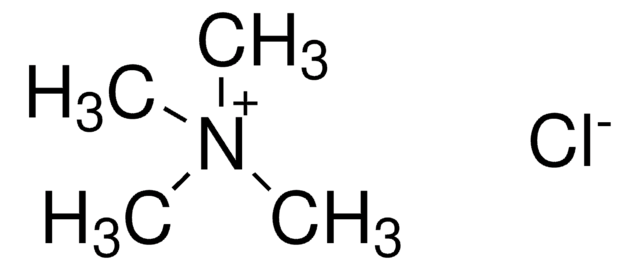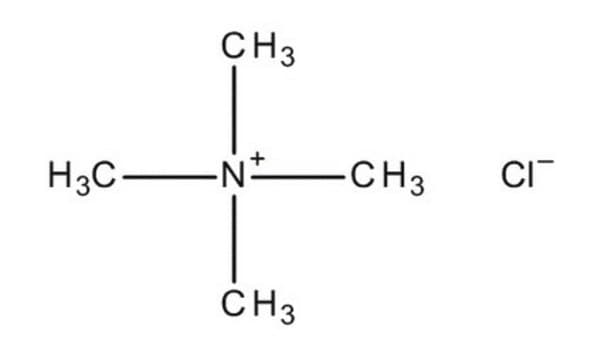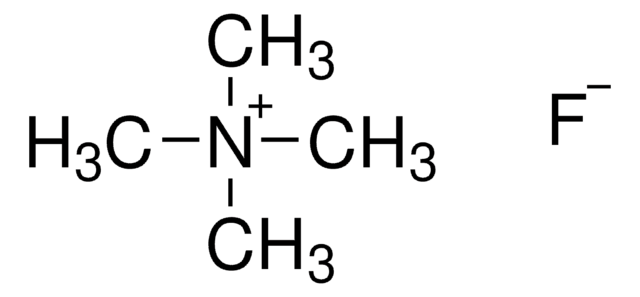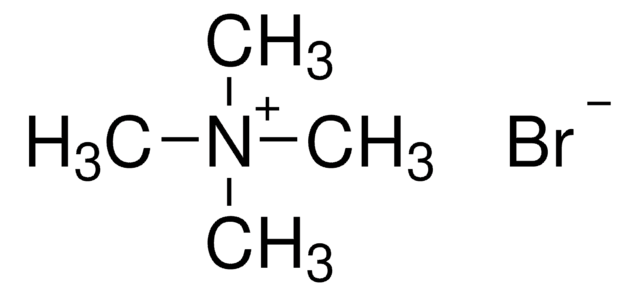74202
Chlorure de tétraméthylammonium
suitable for ion pair chromatography, LiChropur™, ≥99.0% (AT)
Synonyme(s) :
TMA
About This Item
Produits recommandés
Description
cationic
Niveau de qualité
Pureté
≥99.0% (AT)
Forme
crystals
Qualité
LiChropur™
Technique(s)
ion pair chromatography: suitable
Pf
>300 °C (lit.)
λ
10 % in H2O
Absorption UV
λ: 220 nm Amax: 0.05
λ: 230 nm Amax: 0.04
λ: 250 nm Amax: 0.03
λ: 260 nm Amax: 0.02
λ: 500 nm Amax: 0.02
Adéquation
corresponds to standard for RP gradient test
corresponds to standard for filter test
Chaîne SMILES
[Cl-].C[N+](C)(C)C
InChI
1S/C4H12N.ClH/c1-5(2,3)4;/h1-4H3;1H/q+1;/p-1
Clé InChI
OKIZCWYLBDKLSU-UHFFFAOYSA-M
Vous recherchez des produits similaires ? Visite Guide de comparaison des produits
Description générale
Application
Informations légales
Mention d'avertissement
Danger
Mentions de danger
Conseils de prudence
Classification des risques
Acute Tox. 2 Oral - Acute Tox. 3 Dermal - Aquatic Chronic 2 - Skin Irrit. 2 - STOT SE 1 Oral
Organes cibles
Central nervous system
Code de la classe de stockage
6.1A - Combustible acute toxic Cat. 1 and 2 / very toxic hazardous materials
Classe de danger pour l'eau (WGK)
WGK 3
Équipement de protection individuelle
Eyeshields, Faceshields, Gloves, type P2 (EN 143) respirator cartridges
Faites votre choix parmi les versions les plus récentes :
Déjà en possession de ce produit ?
Retrouvez la documentation relative aux produits que vous avez récemment achetés dans la Bibliothèque de documents.
Les clients ont également consulté
Notre équipe de scientifiques dispose d'une expérience dans tous les secteurs de la recherche, notamment en sciences de la vie, science des matériaux, synthèse chimique, chromatographie, analyse et dans de nombreux autres domaines..
Contacter notre Service technique











